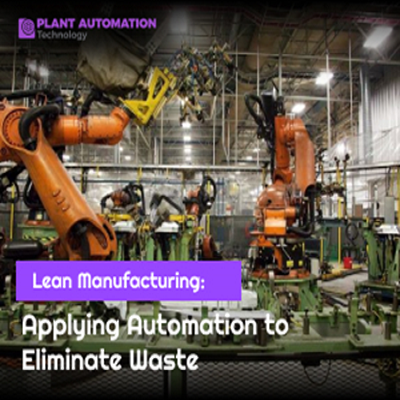Lean Manufacturing: Applying Automation to Eliminate Waste

Introduction:
Lean manufacturing represents a philosophy dedicated to achieving peak efficiency and minimizing wastage throughout the production process. This approach empowers businesses to fine-tune their operations, cut costs, and elevate overall productivity. A crucial element in implementing lean manufacturing involves the strategic integration of automation. In this article, we will delve into how automation can effectively eradicate waste and simplify processes, presenting the information in a manner accessible to a broad audience.
Understanding Lean Manufacturing:
The genesis of lean manufacturing can be traced back to the Toyota Production System, built on the foundation of continuous improvement. At its core, lean manufacturing aims to deliver maximum value to customers while minimizing waste. In this context, waste encompasses any activity or resource that does not contribute to the final product's value. The seven recognized types of waste in lean manufacturing include overproduction, waiting, transportation, inappropriate processing, excess inventory, unnecessary motion, and defects.
The Role of Automation in Lean Manufacturing:
Automation involves the use of technology and machinery to perform tasks with minimal human intervention. Integrating automation into the manufacturing process can help address several types of waste, making operations more efficient and cost-effective.
1. Overproduction: Overproduction occurs when more products are manufactured than can be immediately sold or used. This leads to excess inventory and ties up resources unnecessarily. Automation allows for precise control over production levels, ensuring that only the required amount is produced, thereby minimizing overproduction.
2. Waiting: Waiting time is a common source of waste in manufacturing, whether it's waiting for materials, equipment setup, or quality control checks. Automated systems can operate 24/7 without breaks, reducing idle time and waiting periods. This results in a more continuous and streamlined production flow.
3. Transportation: Unnecessary movement of materials between different stages of the production process contributes to waste. Automation can facilitate a more compact and efficient layout, minimizing the need for excessive transportation of goods within the facility. This not only reduces waste but also enhances overall logistics.
4. Inappropriate Processing: Some processes may involve unnecessary or overly complex steps that do not add value to the final product. Automation allows for the optimization and simplification of processes, eliminating unnecessary steps and ensuring that each activity contributes directly to the product's quality.
5. Excess Inventory: Maintaining large inventories ties up capital and increases the risk of waste due to obsolescence. Automated systems can be programmed to manage inventory levels more efficiently, triggering production only when needed. This just-in-time approach minimizes excess inventory, reducing carrying costs and the potential for waste.
6. Unnecessary Motion: Excessive movement of workers and equipment within the production facility can lead to inefficiencies. Automation streamlines workflows, reducing the need for manual handling and minimizing unnecessary motion. This not only eliminates waste but also enhances worker safety.
7. Defects: Defects in the production process lead to rework, waste of materials, and additional processing time. Automation can enhance precision and consistency, reducing the likelihood of defects and ensuring higher product quality.
Benefits of Automation in Lean Manufacturing:
1. Cost Reduction: Automation leads to a reduction in labor expenses by enabling machines to operate continuously without breaks or shifts. Furthermore, it curtails costs related to waste, including excess inventory and defective products.
2. Improved Quality: Automated systems are programmed for precision and consistency, resulting in higher product quality and fewer defects. This, in turn, reduces the need for rework and enhances customer satisfaction.
3. Enhanced Efficiency: By eliminating wasteful activities and optimizing processes, automation increases overall efficiency. Production cycles become faster, lead times are reduced, and the entire operation becomes more responsive to market demands.
4. Flexibility and Adaptability: Automated systems possess the adaptability to be easily reprogrammed, enabling manufacturers to swiftly respond to fluctuations in market demand or alterations in product specifications. This flexibility is a valuable attribute that facilitates agile adjustments in production requirements.
Conclusion:
In summary, incorporating automation into the framework of lean manufacturing proves to be a potent approach for eradicating waste and fine-tuning production processes. Effectively addressing the seven types of waste enables businesses to elevate efficiency, cut costs, and deliver superior-quality products to their customers. With ongoing technological advancements, the role of automation in lean manufacturing is poised to grow in significance, offering fresh opportunities for businesses to flourish in an ever-competitive market. Embracing these principles sets the stage for a manufacturing future characterized by leaner, more agile, and sustainable practices.







